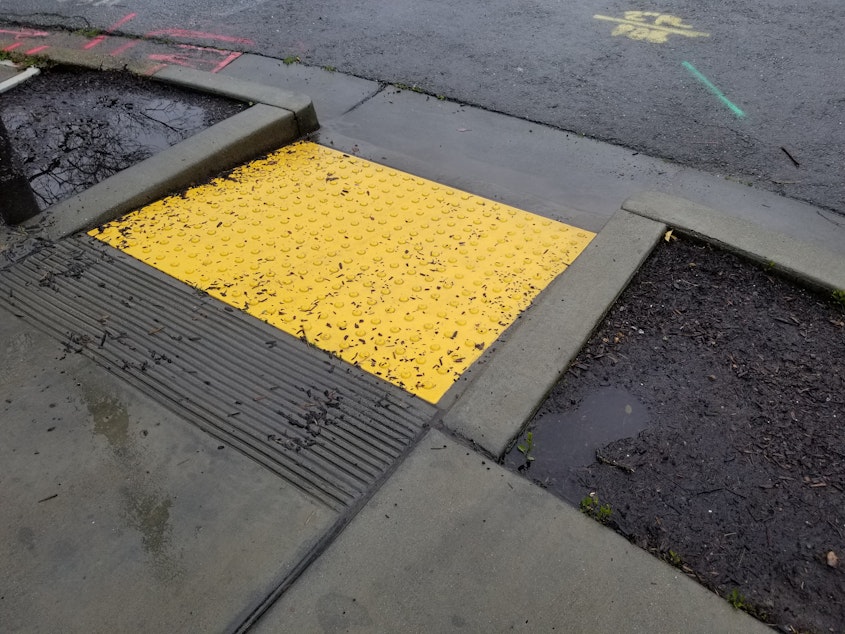Hear it again: Most sidewalks in WA are not accessible

A report by The Seattle Times looked at the infrastructure of 30 Washington state jurisdictions. In all of those cities and counties, less than half of the roads and sidewalks complied with ADA standards.
In 2020, Kenny Salvini was trying to map every street in Sumner.
"My wife was pregnant with our daughter and we decided we're going to roll every street in our little town," says Salvini, who runs the Here and Now Project, whose mission is to connect and empower the paralysis community in the Pacific Northwest. Salvini also uses a wheelchair and was amazed at how many curb cuts were missing from sidewalks in Sumner.
Curb cuts or curb ramps are those indentations on sidewalks that provide a slope from the sidewalk to the street. You might see them at crosswalks or traffic lights or you might not see them at all.
"Having a reliable wheelchair lets you get out in the world. But the minute you run into a six-inch curb somewhere, that's where your independence pretty much gets cut short," Salvini said.
Counties and cities are required by law to ensure that sidewalks meet certain standards set by the landmark civil rights bill, the Americans with Disabilities Act, or ADA, that includes providing adequate access to sidewalks.
Sponsored
Much of the state lacks this critical infrastructure. Seattle Times transportation reporter David Kroman recently looked into ADA compliance in 30 Washington cities and counties.
In all of those jurisdictions, less than half of the roads and sidewalks complied with ADA standards.
"The sidewalk problem is massive and one, I think, that's hard for people to wrap their heads around," Kroman said. "But at the end of the day, the federal government is saying this is not right."
David Kroman spoke with Soundside about the complications of fixing sidewalks and his article, "WA Faces an Epidemic of Inaccessible Sidewalks."





